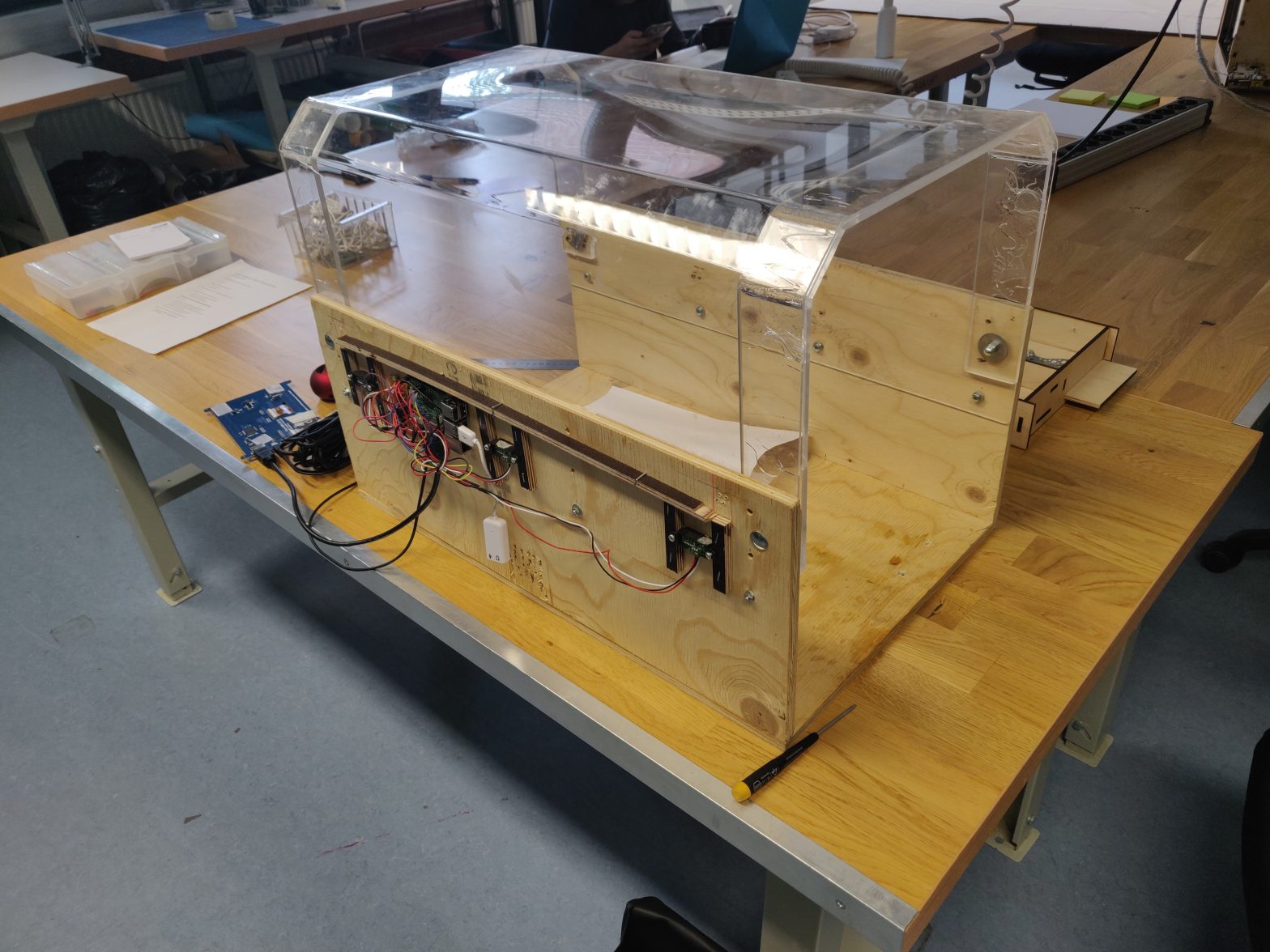Scientists from Aalto University, in collaboration with Korkeasaari Zoo, have designed and built an on-demand video device for white-faced saki monkeys to activate as and when they like. The actual device was developed and built in Aalto Studios Fablab.
The device, a tunnel built of plywood and acrylic and equipped with a monitor, camera and sensors to monitor the use of space, was placed in the saki habitat at Korkeasaari Zoo. It was up to the animals to decide whether they wanted to step inside the device – the equivalent of pressing play – to see the video of the week. During the study, the device played five different kinds of scenes: sealife like fish and jellyfish, wiggly worms, other zoo animals like zebras, makis and deer, abstract art, or lush forests.
The project with Korkeasaari begun in 2019 when only sounds and music was played for sakis in a plywood box. Next development version in 2020 added also video and surveillance camera into the device. Master’s student and co-author of the project paper Vilma Kankaanpää stepped into the project as video and camera equipment needed to be added into the device.
“We could use the Aalto Studios Fablab facilities flexibly despite covid restrictions. We also got a lot of help from the Fablab staff. I mainly used the laser cutter to make the elements needed. The video screen and the camera also needed to be protected from moisture”, says Kankaanpää.
The results were interesting. The monkeys actually did pay attention to the screen; they watch and touch it. “We also suspect they recognize objects on the screen. One of the videos we had featured meal worms – an everyday meal for them. They actually tried to lick the screen and even went around the tunnel to see if the worms were behind it,’ explains Kankaanpää.
The researchers found that, in comparison to the no-video control condition, the sakis scratched themselves significantly less often when presented with video content. For monkeys in captivity, scratching can be a sign of stress.
Kirsi Pynnönen-Oudman, research coordinator at Korkeasaari Zoo, believes that both audio and video can be used to enrich the lives of primates and possibly some birds, such as parrots and crows, living at their facilities also in the future.
The equipment must withstand the handling of animals, and those which have, for example, sharp teeth must have their own equipment. It remains to be seen if Aalto Studios will participate in developing further equipment for various species in Korkeasaari Zoo.
